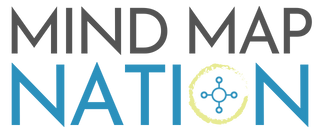Rookie Mapping Tips
After meeting with MMN members for the past month, I realized there are common barriers to mind mapping if you’re a beginner. Below are some tips I distilled across five office hours and our Mind Map Mastery course retrospective meetup.
Why mind maps: They get the complexity and noise out of our heads. We can then have a more objective discussion around what’s on paper with others and reduce misinterpretation. It’s a clearer way of communication. We’re also able to separate ourselves emotionally from the information to see the bigger picture and make better judgement calls.
Just start: Mind mapping is about capturing the flow of thoughts. It’s a visual form stream of consciousness writing. Don’t worry about which app to use, just grab a sheet of printing paper and a pen. This is what I used when I began mapping.
Doesn’t have to be pretty: There are lots of books and videos that say you should make your mind maps in a certain way or draw colorful diagrams. That’s nonsense. By hand drawing maps with a pen, you can overcome the need to make maps look pretty. It’s surprising what you can achieve with just some boxes, circles and lines. From these simple elements, I’ve created countless map to solve various problems.
Stress of upfront organization: Half the battle of mind mapping is figuring out the initial structure. Because maps are hierarchical, it requires you to think logically from “top down”. But not everyone thinks this way.
The “bottoms up” alternative is to just draw out all the tasks that come to mind (again, stream of consciousness), and then look for commonalities and natural groupings. You can use two mind maps in this instance: one to freely expand out your thoughts, the other one to “refine” them after patterns emerge. Try this on the To-Do Mind Map next time you want to organize your daily tasks!
Apply templates: The other way of dealing with initial structure is to use a template. Use my videos and Mind Map Mastery book as templates for you to apply to specific problems. You can also plug in mental frameworks. For example, our member Chris swears by the OODA Loop mind map for example. Once you get the hang of the template, you can modify the map to suit your needs better. This is how mind maps evolve over time, and why the MMN community exists for us to share best practices.
Illegible handwriting: What if you have poor handwriting? This is where digital apps might be a good assist. MindNode is a great beginner app because of its simplicity. Even some of our advanced mappers use it on the daily.
Make the most of your mind maps
Thanks for reading this article. If you found it useful, you can get a new mind map in your inbox every week. Epiphany is your dose of structured thinking and ordered chaos.
